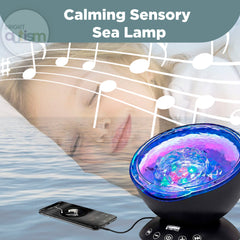What is the Difference Between Meltdown and Tantrum?
A TEMPER TANTRUM IS NOT A MELTDOWN

They may seem similar on the outside. Externally, meltdowns and tantrums look really alike. But there are in fact differences between the two.
Tantrums can be seen in younger children as willful behaviors. Not that children plan to frustrate their parents or caregivers, but they want to express their frustration.
It is important to note that children with autism can, of course, have classic temper tantrums. But, understanding the difference between tantrums and meltdowns can provide great insight.
Tantrums can be resolved through a certain kind of response, while the same response can overwhelm the child during a meltdown.
There are a couple of ways to figure out the difference between the two:

-
Audience:
When ignored, tantrum behavior usually stops . Or when the child gets what they want, they may stop the behavior. But a meltdown will occur regardless of an audience, as it is a response to an overload of external stimuli causing emotional explosion. This could even happen when they are alone.
-
Angry vs. Overwhelmed:
Tantrums stem from being angry or frustrated. But meltdowns are generally a reaction to being overwhelmed. Children on the Spectrum can’t control their meltdowns. Strategies like hugs, incentives or distractions that work on tantrums will not be beneficial for meltdowns.
-
Getting What They Want:
Tantrums could be goal oriented. This means that a tantrum in a young child is typically a result of getting what they want. This could be a toy or not doing a certain routine or eating only a certain type of food.
What Do Tantrums Look Like?

Here’s the reality: every child will throw a tantrum at some point, whether they have an autism diagnosis or not. But for children with autism, tantrums can be more frequent, distressing, and difficult to quell.
However, it is in no way impossible; you’ll just need to be a little more patient.
Tantrums differ from one child to another. They can be spectacular explosions of anger. Your child may “lose it” with frustration and disorganized behavior.
During tantrums , your child may cry, stiffen up, scream, kick things around, fall down or run away. Some children hold their breath, and some even vomit.
This is how children may express their frustration with the challenges that they are facing.
Thirst , hunger, tiredness: Some examples that can lead to tantrums.
Behavioral Strategies for Tantrums

You may have to try out a few of the following techniques in different situations before you find one that works for your child. In fact, you’ll probably need to keep several in your back pocket.
- Figure out the motivation:
-
- To get attention
- To get what they want or need
- Denial of what they want or need
- Delayed access to what they want or need
-
Reinforce positive behavior:
-
Continue working on or developing communication skills:

- Practice asking for things appropriately, either verbally or using a visual or text-based system (picture cards, a small whiteboard, etc.)
- Be as clear as possible about what you expect behaviorally of your child. Don’t say something like, “You need to behave at dinner.” That’s too general and confusing a statement for a child to fully understand and follow. Instead, say something like “You need to help set the table, sit down when we’re ready to eat, and keep your hands to yourself.”
- Keep a few items in your bag or car that can help mitigate sensory overload or sensory triggers, common causes of tantrums in children with autism. For example, if your child is scared by all the noise in the grocery store, consider keeping a pair of noise-canceling headphones in your car that you can easily grab before entering the store.

Many parents have a hard time ignoring tantrums. By preparing in advance, parents are more likely to act with consistency and calmness.














Leave a comment